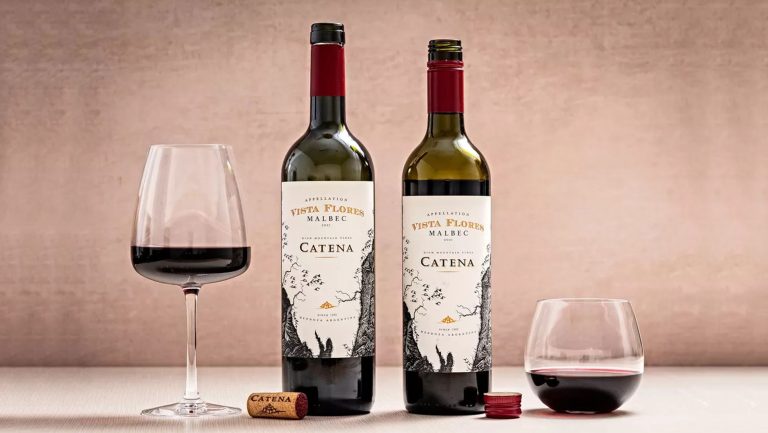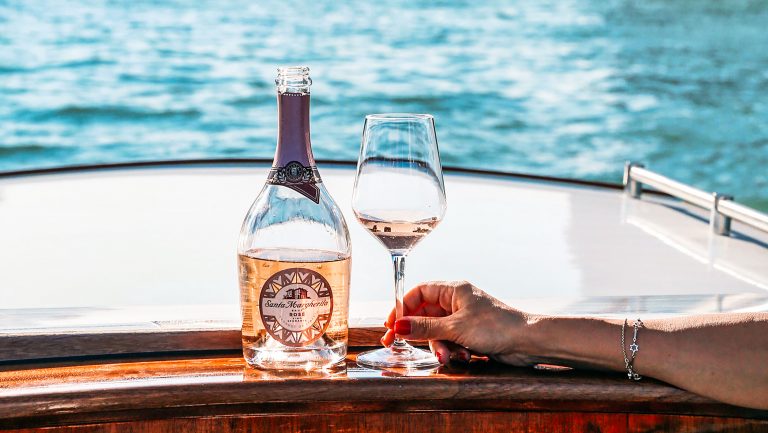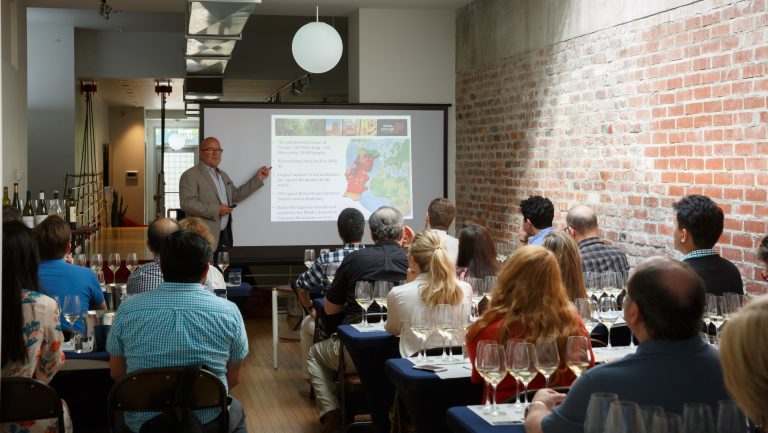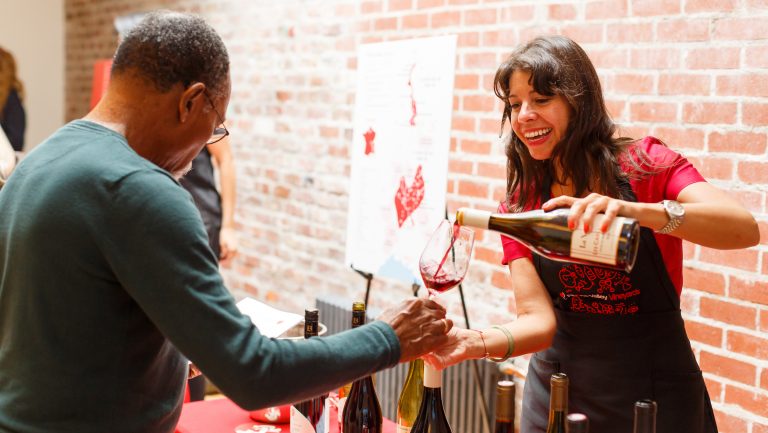This advertising content was produced in collaboration with our partner, Catena.
For years, consumers and professionals alike associated heavier bottles with better wine. That perception led to the wine world’s equivalent of an arms race to package high-end wine in the thickest, most substantial glass bottles possible. As a result, the weight of the empty bottles used for super premium wines climbed as high as 1200 grams in some cases.
This, it turns out, has been terrible for the environment: Simply put, producing heavier bottles requires more energy and resources, and shipping them around the world requires more fuel. “Up to 60 percent of a wine bottle’s carbon footprint is related to the weight of the glass bottle and its transport,” says Dr. Laura Catena of Bodega Catena Zapata in Mendoza, Argentina.
The winery has long demonstrated environmental leadership in the industry with its Catena Institute of Wine regularly publishing its research into new sustainable initiatives in scientific journals—and when it comes to carbon emissions, its latest target is bottle weight. As Catena says, “Lowering bottle weight is the single most effective action one can take to reduce a wine bottle’s carbon footprint.”

Don’t miss the latest drinks industry news and insights. Sign up for our award-winning newsletters and get insider intel, resources, and trends delivered to your inbox every week.
Bottle Weight Is An Industry-Wide Issue
The glass bottle is widely accepted as the gold-standard package for fine wine. And while a number of producers are experimenting with alternative options—bag-in-box, Tetra Pak, and more—glass is unlikely to be de-throned as the vessel of choice across the industry. To keep in step with increasing efforts to offset carbon emissions, wine producers around the world have been forced to take a hard look at the impact of every aspect of grape growing, wine production, and shipping— including its packaging.
The greatest emitter of carbon in packaging comes from outsourced glass production, according to International Wineries for Climate Action. The heavier the bottle and the less recycled glass is used in the bottle’s production, the higher its environmental impact.
In addition, transportation—from production facilities to the winery, as well as from the winery to its customers— comes with a major environmental cost. But glass, as a material, has the potential to be a sustainable packaging option if produced properly.
Creating High-Altitude Wines With Lower Carbon Emissions
Laura Catena has never done anything partway. She’s a U.S.-trained emergency physician, managing director of Bodega Catena Zapata, a highly regarded author and speaker, and a leader in climate change and sustainability initiatives for the wine industry. The Catena Institute, for example, developed an in-house sustainability code for the winery which later became the foundation of the Bodegas de Argentina Sustainability Self Assessment Protocol adopted nationwide.
This year, Catena is spearheading the release of the 2022 Catena Appellation ‘Vista Flores’ Malbec in a bottle that is 45 percent lighter than previously—coming in at just 380 grams—as well as an educational campaign aimed at both staff and consumers about the importance of lighter packaging. Given the success of the Vista Flores in by-the-glass programs across the U.S., this represents serious volume.
Catena is fully aware of the challenges that lie ahead in shifting the consumer association between weight and fine wine. “Wine lives within a bigger context of luxury products, such as perfumes, Champagne, and spirits that come in heavy bottles with lots of packaging,” she says. “To me, our campaign is about spreading the message that what matters is the juice inside the bottle and not the packaging. If enough people are talking about the benefits of reducing bottle weight, then consumers will start preferring lighter bottles. Producers always follow what the consumer wants, so the key person we need to convince is the wine lover.”
There is a relatively recent historical precedent for success when it comes to reducing heavy packaging. “Remember when suitcases were heavy?” Catena says. “Just like today most suitcases are light, I think in ten years, glass bottles for most alcohol products will be light.”
A Years-Long Effort To Reduce Bottle Weight
The rollout of the Catena ‘Vista Flores’ Malbec in its new bottle has been a long time coming. Lowering the weight of a wine bottle isn’t just a matter of producing bottles with thinner glass walls. A bottle still has to safely protect the wine inside, remain intact despite the rigors of being shipped, and, in the case of sparkling wine, withstand the high pressure of the liquid and carbon dioxide inside. It also has to look and feel luxurious, especially for the world’s most collectible wines.
“Our main partner has been Verallia, a French glass manufacturer that has bottle-making facilities all over the world, including in Argentina,” says Catena.
“Verallia’s research and development department has been able to create very attractive-looking, low-weight bottles. Every year, they develop the design technology to reduce bottle weight further.”

Bodega Catena Zapata started working with Verallia to reduce glass weight in 2009, as part of their sustainability goals, and today their bottles are overall 40 percent lighter than they were then. Over the last two years, Catena’s reduction in weight has lowered pre-boat transport carbon dioxide emissions by 21 percent and reduced the amount of glass they require by 1,200 metric tons.
The rollout is accompanied by an interactive education campaign. For example, there’s a training quiz available through a QR code for restaurant staff or consumers, the results of which will allow the winery to gauge the success of its efforts, and then potentially modify the campaign.
Next up, the winery intends to transition the Catena High Mountain Vines wines, its bestselling Malbec offering, to a new 28 percent lighter bottle, which will be elegantly taller and thinner than the original. It will also be accompanied by a sales, trade, and consumer educational campaign to importers spanning the Americas, Europe, and Australasia.
This is just one part of Catena’s mission to have a positive impact on the environment. They are also investing in drip irrigation for all their vineyards, to offset water shortages in the Uco Valley, and the Catena Institute is studying how to capture carbon on vineyards by planting trees and cover crops, and by preserving native forests. But reducing glass bottle weight is an actionable step with immediate positive results. As Catena says, “There are simple things we can do to support the planet, and one of these simple things is choosing lighter wine bottles and less packaging for our products. What matters is the wine inside the bottle. Great wine and lighter grocery bags—it’s a win-win proposition!”

Dispatch
Sign up for our award-winning newsletter
Don’t miss the latest drinks industry news and insights—delivered to your inbox every week.









